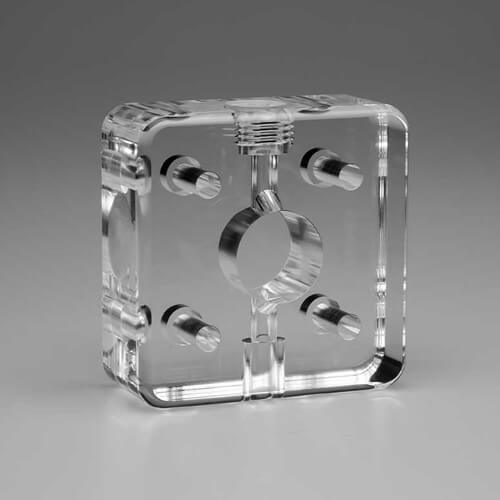This website uses cookies so that we can provide you with the best user experience possible. Cookie information is stored in your browser and performs functions such as recognising you when you return to our website and helping our team to understand which sections of the website you find most interesting and useful.
- Home
- Surface Finishing
- Vapor Polishing
Vapor Polishing Services
Vapor Polishing-the best technique for polishing the surface of 3D-printed objects, particularly those made with thermoplastics like ABS (Acrylonitrile Butadiene Styrene), helps to reduce layer lines and imperfections, giving the object a more polished appearance or glossy finish.

introduction
Vapor Polishing for 3D Prints

This is an affordable choice to enhance the visual appeal of prints without investing in expensive machinery. It also improves transparency for certain materials like ABS.
DEK's vapor polishing is quicker than manual post-processing methods like sanding or filling, especially for large or intricate objects. We provide a more consistent finish across the entire surface of the printed object, avoiding variations that can occur with manual finishing methods. DEK offers efficient results with compatible materials, minimizing the need for different finishing techniques. Furthermore, it requires less manual effort compared to other traditional post-processing methods. Vapor polishing is a simpler, more user-friendly option for achieving a glossy or transparent appearance on the surface of a 3D-printed object.
TECHNOLOGY OVERVIEW
More About Vapor Polishing
What’s Vapor Polishing?
Vapor polishing is a finishing technique used in manufacturing and 3D printing processes, particularly with materials like plastics. Vapor polishing improves the surface finish of a 3D printed object, giving it a smoother and more polished appearance. The process involves exposing the 3D printed part to a vaporized solvent or a specific chemical that selectively smooths the surface by slightly melting or reflowing the outer layers of the material. This can help reduce layer lines and surface imperfections for a more aesthetically pleasing final product. The specific solvent or chemical used in vapor polishing depends on the type of material the 3D printed object is made from. Commonly used materials for vapor polishing include ABS (Acrylonitrile Butadiene Styrene) and PLA (Polylactic Acid). Vapor polishing should be done cautiously, as improper use or exposure to harsh chemicals can damage or deform the printed object. Safety precautions, proper ventilation, and adherence to recommended guidelines are essential when using vapor polishing techniques.
Advantages of Vapor Polishing
- Smoothing surfaces
- Enhancing transparency
- Improving surface finish
- Reducing roughness
- Eliminating visible layer lines
- Enhancing aesthetic appeal
- Achieving polished and glossy appearance
- Facilitating light transmission
- Streamlining manufacturing process
- Minimizing post-processing requirements
Design Considerations for Vapor Polishing
- Effective with certain thermoplastics like ABS.
- May not work well with all 3D printing materials.
- Consider material compatibility with the chosen solvent.
- Solvents used can be flammable.
- Health risks if not used properly.
- Follow safety guidelines, work in well-ventilated areas, use protective equipment.
- Vapor polishing can lead to loss of fine details.
- Process involves melting the outer layer.
- Intricate details may be softened or lost.
- Achieving optimal results needs skill and experience.
- Control exposure duration and solvent choice.
- Avoid over-smoothing or damage to the print.
FAQ
Vapor Polishing FAQ
Get An Accurate Quote For Your Next Projects
No matter your project is complicated or simple, no matter is metal or plastic, you will get an accurate quotation within 6 hours.
Get A Quote Today